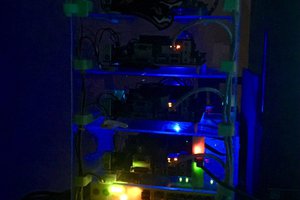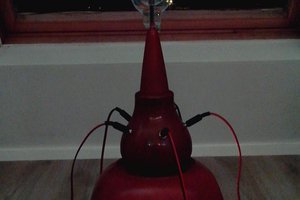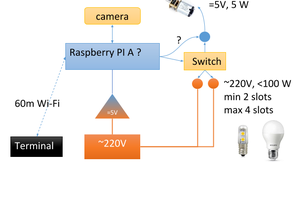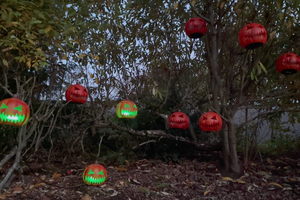Finding a suitable case
Bush were an early UK electronics company and the DAC90A, brought out in 1950, is the classic vintage radio set. Made from Bakelite, it emanates a warm orange glow from the glass tuning panel that brings to mind clipped British voices bringing news of royal controversy and overseas conflicts. Twisting a dial through bands of static would allow you to discover glimpses of upbeat rhythmic tunes from across the Atlantic from artists with exciting and unfamiliar names.
I lurked in many eBay auctions looking for the right radio at the right price. I wasn’t worried about it being in working order - just that the Bakelite case wasn’t badly damaged. I eventually got lucky and picked up a good example for £35 (+£12 delivery).
The inner workings of the radio didn't look to be in bad condition, but I wasn’t interested in trying to get them working - I didn’t have the skills or tools either. There are some people who do restore vintage valve radios, but I simply wanted to remove the innards and make space for my new podcast player.
I did offer the removed workings to a repair shop, but I guess these radios are so popular that spares are relatively easy to come by, so I put them in a box, where they stayed until getting culled in a garage clear-out. I think I still have a couple of the valves somewhere.
This is a point of regret on the project. Once I’d got the radio case, I didn’t take many photos to track the project. The ones I have seem to be from before I started and after I’d finished.
Replacing the back panel
You might notice that the power cable had already been ‘upgraded’ to a modern pvc cable wired directly into the radio tuner. Clearly I would need to replace this and would need some kind of power socket. With no external metal parts, a two pin ‘figure 8’ power connector would do the trick. According to Wikipedia these are officially and IEC C7 and are intended for “Domestic audio, video, radio equipment and doubly insulated power supplies”. Perfect.
However, I was not confident in the cardboard back panel of the radio being strong enough to support the power socket - especially when pulling the cable out. So my first task was to make a new back panel. Luckily a friend, and local hero James Wallbank, had just started up a Maker’s shop and offered lessons in using his laser cutter.
It didn’t take too long to scan the radio case and trace it in Inkscape. James very kindly took the Inkscape vector files and turned into a laser cut path file. There was quite a bit of stuff he had to check - making sure that there were no double cuts, ensuring the cuts are in a sensible order. He then applied his optimised settings for the power and speed of his laser cutter to ensure that the 3mm plywood sheet we were cutting actually cut through, but didn't scold too badly.
My back panel design cut some air flow holes, which probably wouldn’t be necessary, but they kept the general feel of the original cardboard panel. Plus I added cut outs for the IEC-C7 socket and a power switch.
The electronics
With the case now in fairly good order, I had to consider what I’d be putting inside it. I figured that with no display to speak of, I had no need of a desktop operating system. So the newly released Raspberry Pi Zero would probably have enough umph to download and play some mp3 files. However, Raspberry Pis have notoriously poor audio output, so I picked up a pHAT DAC audio ‘hat’ card from Pimoroni (local Sheffield provider of electronics kit and pirate themed awesomeness).
The pHAT DAC would provide a good quality stereo audio signal (although I only needed mono), to some sound I needed a speaker and an amplifier. For the amplifier I picked up a nice cheap bare circuit “DIY” 15W amp for under £5.
The speaker was a simple 6.5 inch car speaker. The tricky bit was finding one that was a sensible cost. Clearly car speakers are somewhat a connoisseur...
Read more » Saul Cozens
Saul Cozens


 Colin Alston
Colin Alston
 RodolpheH
RodolpheH

 Aaron
Aaron
nice but we have 21 century. Meybe make a mobile device? with big powerbank , solar panel on bottom.